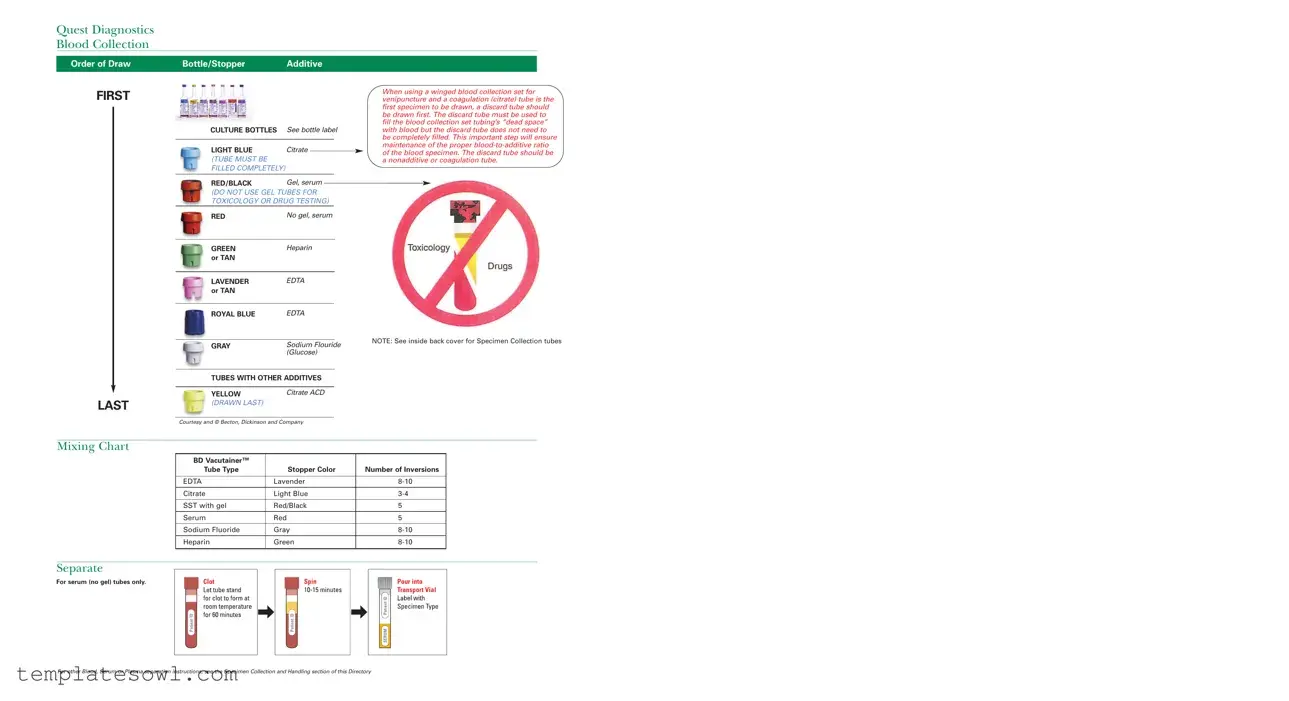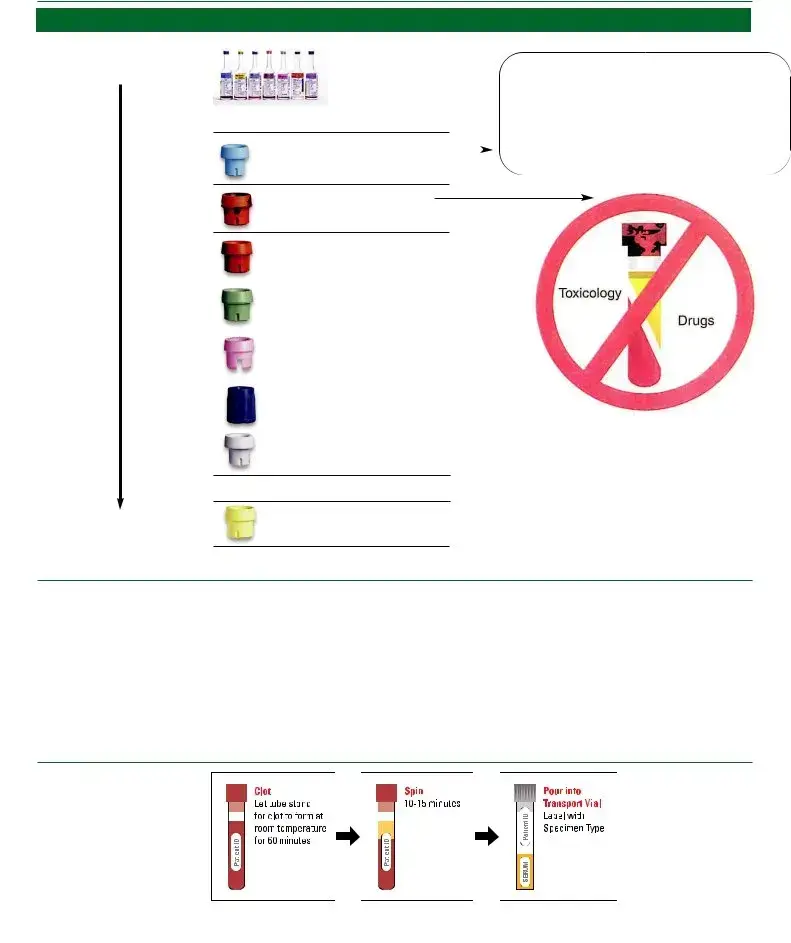What is the correct order of draw for blood collection using Quest Diagnostics specimen tubes?
The order of draw is important to avoid contamination of samples and ensure accurate test results. When collecting blood, the first tube should generally be a culture bottle, followed by a light blue tube, which contains sodium citrate. After that, use red/black gel tubes or red serum tubes, followed by green tubes that contain heparin. You can then collect lavender tubes containing EDTA and finally gray tubes with sodium fluoride. If a coagulation tube (light blue) is the first specimen drawn, a discard tube should be used first. This helps to fill the “dead space” in the blood collection set, ensuring the proper blood-to-additive ratio.
Why is it necessary to use a discard tube when using a winged blood collection set?
Using a discard tube is crucial when the first specimen drawn is a coagulation tube, such as the light blue tube. This step helps to eliminate any air that may be present in the blood collection set tubing. By filling this “dead space” with blood, you help maintain the proper blood-to-additive ratio, which is essential for accurate test results. The discard tube does not need to be completely filled, but it must be used to ensure that subsequent specimens are not affected by air or contamination.
Can I use gel tubes for toxicology or drug testing?
No, it is not recommended to use gel tubes (red/black) for toxicology or drug testing. These tests require a clear serum sample without any additives that could interfere with the analysis. Therefore, red serum tubes without gel should be utilized for these types of testing. It’s important to adhere to these guidelines to ensure the integrity of the tests being conducted.
What are the mixing instructions for each type of Quest Diagnostics specimen tube?
Proper mixing of specimen tubes is essential for uniformity of the sample. For each tube type, specific numbers of inversions are required. For instance, the lavender EDTA tube should be inverted 8 to 10 times, while the light blue citrate tube should be inverted 3 to 4 times. Red/black gel tubes and red serum tubes need to be inverted 5 times each. Green heparin tubes also require 8 to 10 inversions, while the gray sodium fluoride tube should be inverted 8 to 10 times. Following these mixing instructions ensures that the additives mingle appropriately with the blood, which is vital for accurate test results.

